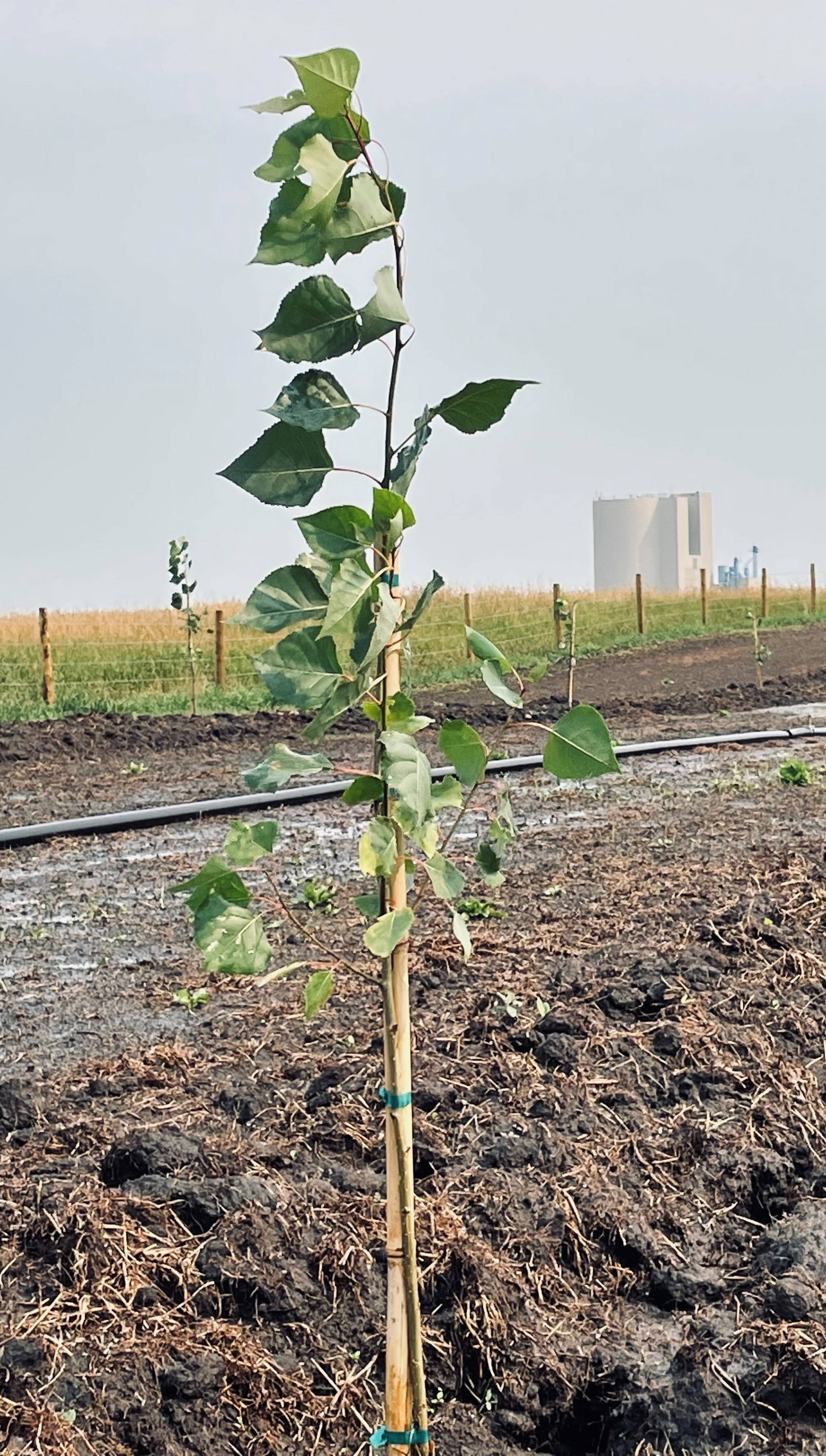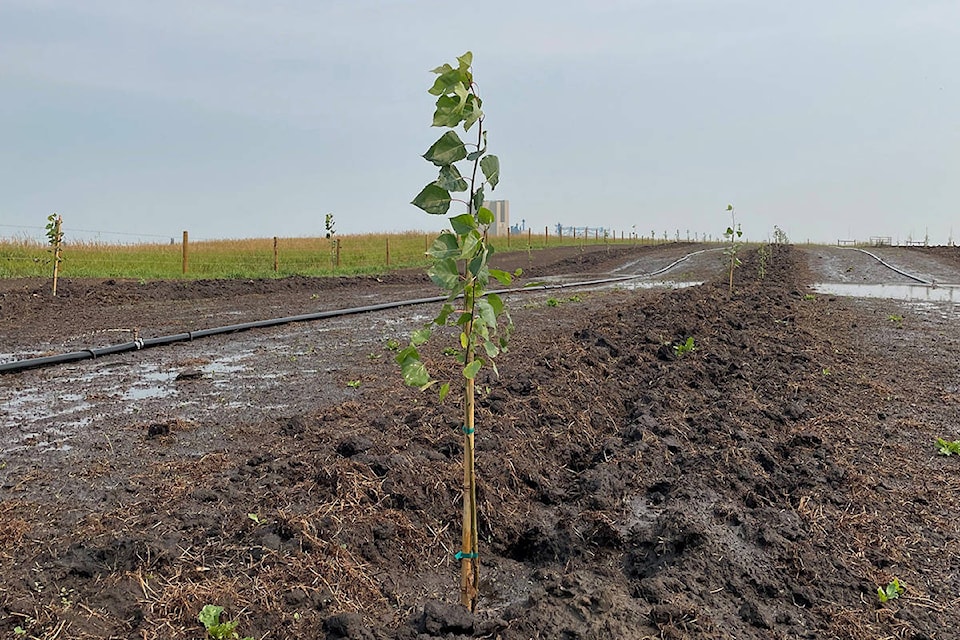A central Alberta malting facility is growing a forest of trees through innovation and sustainability.
Rahr Malting Co., which has been in Alix since 1992, recently planted 100 hybrid poplar trees at its facility. These trees will be used as a trial for re-using steeping water, which is a byproduct of the malting process.
“We currently have a process where we take it to a series of lagoons that react with the nutrients in the water to get it to a level that’s acceptable to use if for irrigation,” said Darren Smith, chief operations officer.
“We’ve been using it for irrigation for 30 years. What happens is we still have some residual nutrients in there, that over time can hinder the overall growth of some of the crops. So we’re looking for a sustainable solution – something that’s more tolerant of the nutrients and hybrid poplars are a very nutrient-accepting tree.”
A small amount of irrigation water will be used to test if these trees are accepting to the nutrients and grow well.
“If that is successful, we may expand our acreage of trees on our site,” Smith said, adding the company is always looking for new and inventive ways to be more sustainable in the agriculture industry.
“We got the soil all prepared and irrigation set up over the last couple of months to plant the trees two weeks ago.”
READ MORE:
— Red Deer vegetable garden grows food for those in need
— Olds College to share agriculture research with other colleges
For the project, Rahr Malting partnered with Parkland Nursery and Landscape Services Ltd. in Red Deer, which provided the one-year-old hybrid poplars.
“The great thing about the hybrid poplar is it grows around six to eight feet per year and it actually consumes a fair bit of water. It’s a fairly sustainable way for us to use our irrigation water,” Smith said.
“We’re just seeing if there’s potential to expand this to be able to use a reasonable amount of our water there and certainly use some of it still on the crops that we do with local farmers in the area.”
There are a couple of nutrients that carry through the irrigation process that the hybrid poplars seem to be very tolerant of, Smith explained. Over the years steeping water has been used on crops for hay and corn at six or seven local farms, but it doesn’t work well on barley or wheat, he added.
“The challenge you get into with irrigation, in heavy rain years (farmers) want less water and years like this year, they’ll obviously want more water and we’ve got a consistent amount of water we’re producing at the facility.”
While other malting plants use their water for irrigation, Smith said this is the first time he’s heard about a malting facility using it for trees.
The company will monitor how the trees respond over the next couple of years and will then decide what the future of the project will be.
Hybrid poplars can be harvested for wood and new trees will grow out of the original stumps, Smith said.
“With the trees you get the added bonus, because they grow so fast, they use a lot of C02 from the atmosphere.”
Rahr Malting Co. is part of the Rahr Corporation, founded in 1847 and based in Minnesota.
Correction to article made Sunday, Aug. 1.
sean.mcintosh@reddeeradvocate.com
Like us on Facebook and follow us on Twitter

